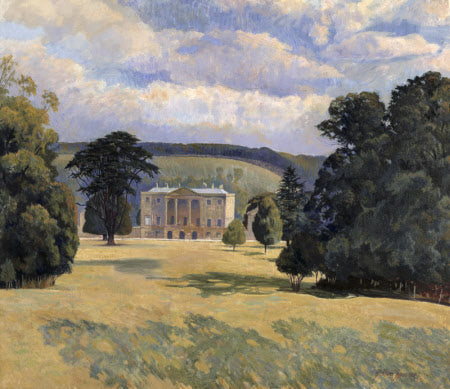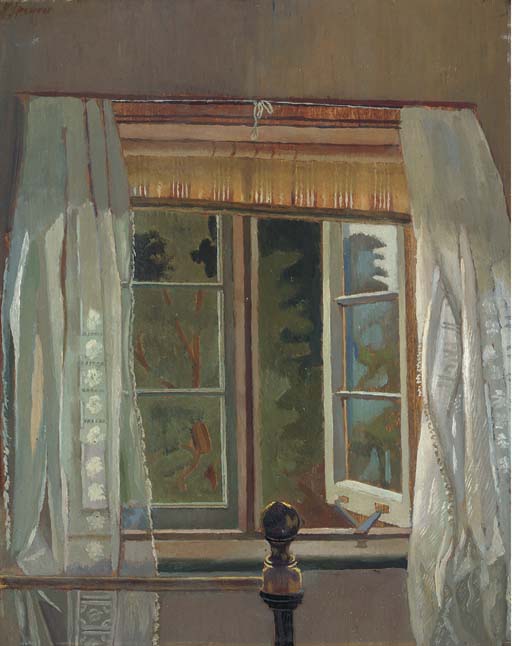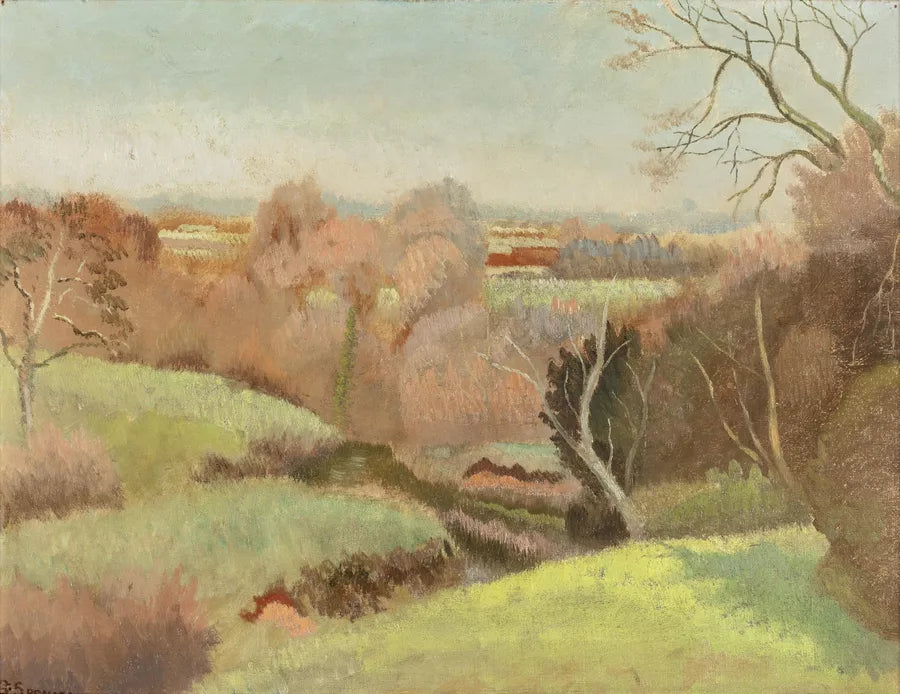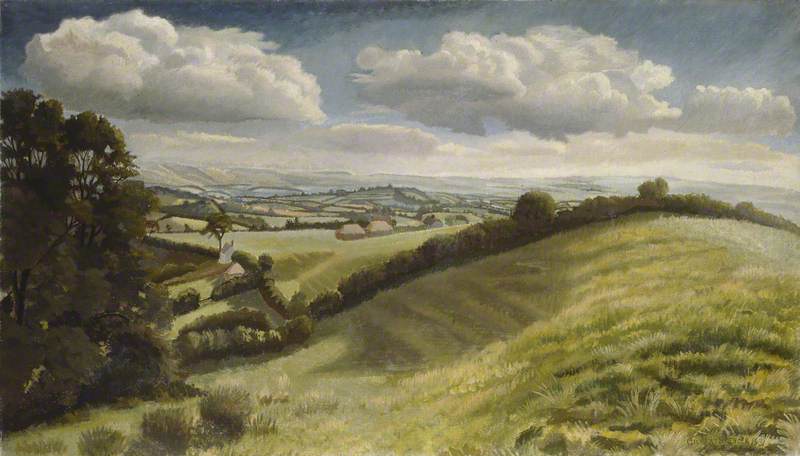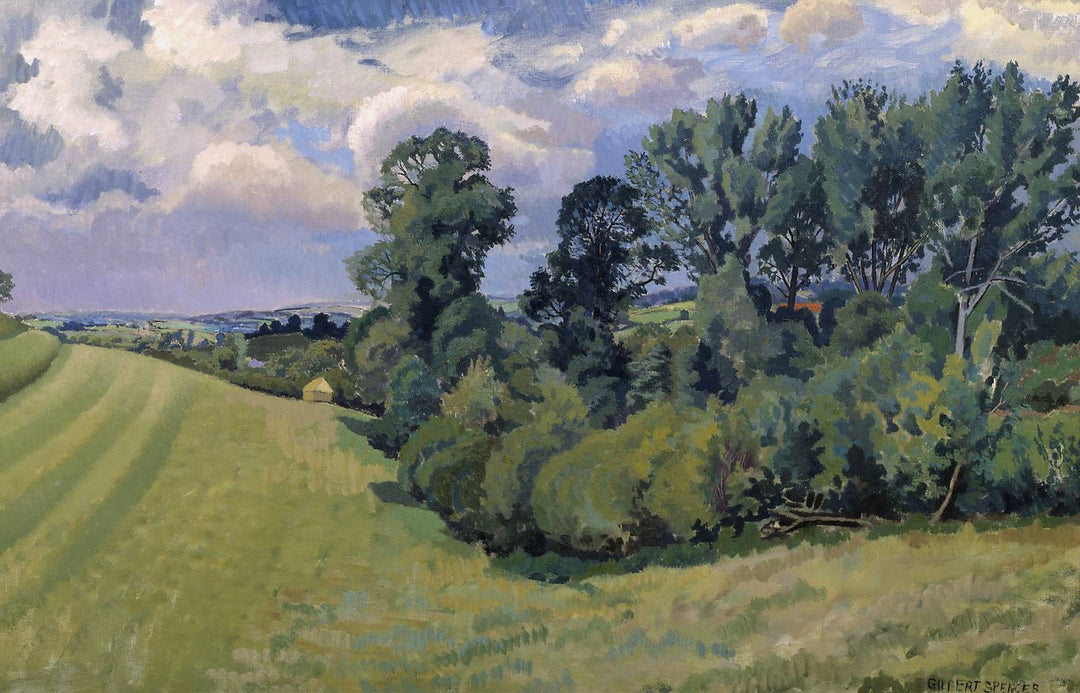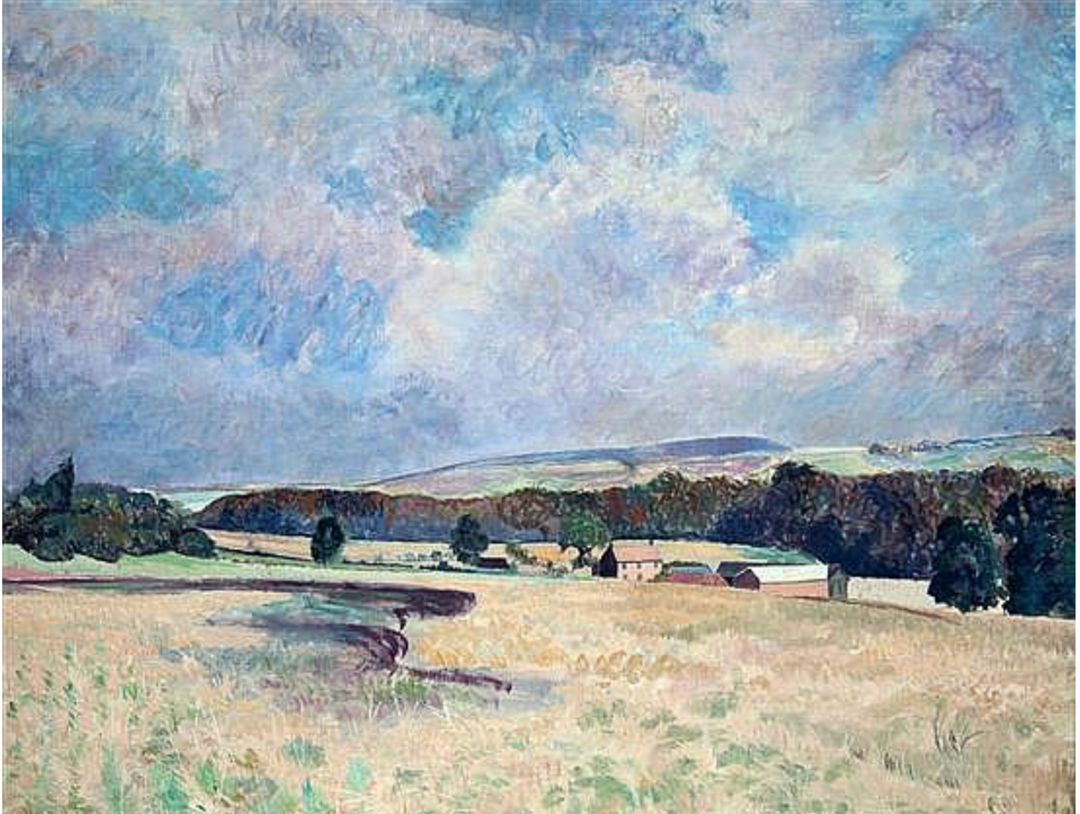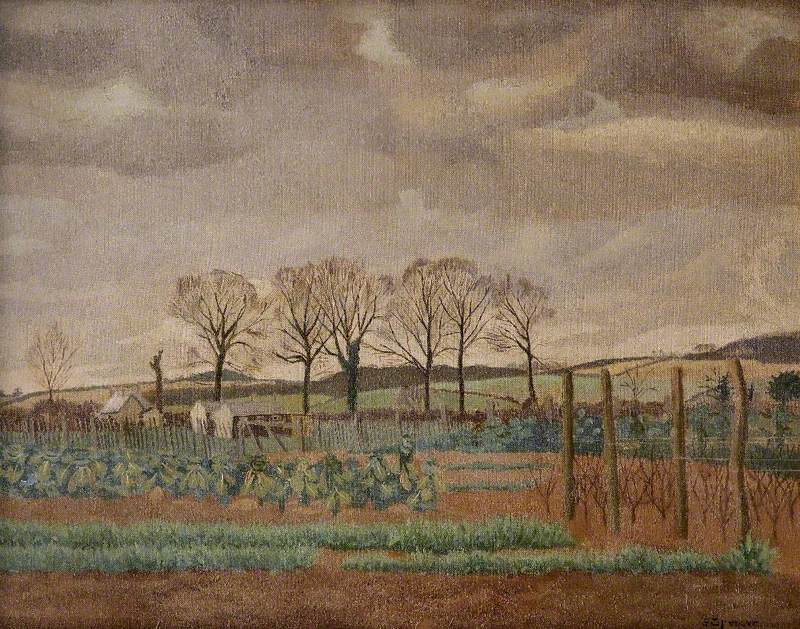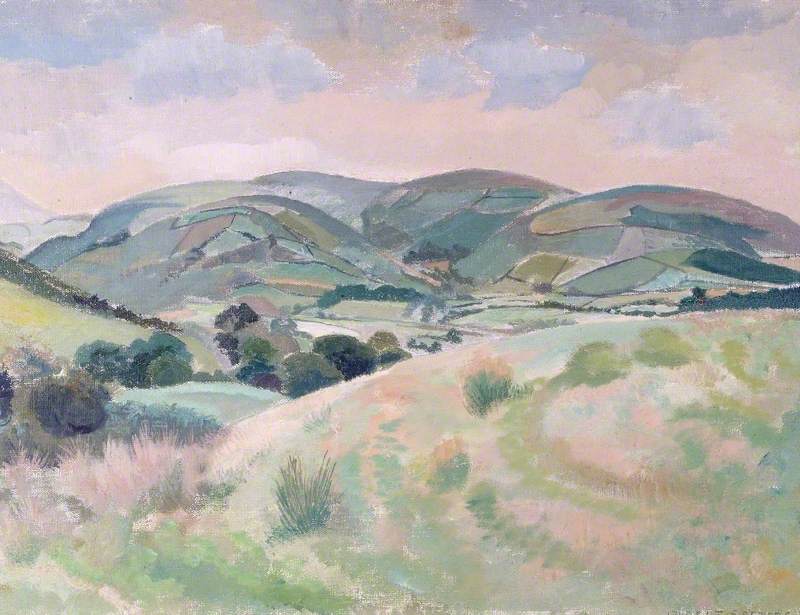Landscapes make up by far the greatest part of Gilbert Spencer’s output, and are the genre for which he is best known. He was no seeker of the Sublime, preferring the gentler landscapes of the southern English counties, where he lived for most of his life. Indeed, when Spencer was evacuated to Grasmere with the Royal College of Art in 1940, he struggled to adapt to the dramatic Lake District scenery, admitting that he ‘never came to terms with the mountains, and treated them as sky’. His tranquil English landscapes were part of an inter-war current of neo-romanticism (see Alexandra Harris, Romantic Moderns, London, 2010), whose fellow travellers included Spencer’s close friend John Nash and his brother Paul Nash, Eric Ravilious, and John Piper. In composition and technique, however, Spencer’s landscapes owe as much to Camille Pissarro and Paul Cézanne as they do to his English peers.
Spencer’s childhood home of Cookham inevitably provided the subject matter for his first landscape paintings, of which the earliest, Fernlea, Cookham (c. 1913-4, Government Art Collection) is essentially a study for his Slade composition prize-winning Summer (1914, UCL Art Museum). Many of these early landscapes are composed of strong, horizontal bands, such as Winter Landscape, Cookham (1919, private collection), and Bourne End Allotments (1919, Museums Worcestershire). However, Sashes Meadow (c. 1914-9, Tate), begun before the war and completed on his return, utilised a far more sophisticated composition, and developed much of the visual vocabulary that he would draw on for subsequent landscapes: a prominent foreground feature, closely-observed foliage and groupings of trees, tonal gradations of greens and browns, and distant hills enclosing the view.
This was developed further during his first visit to Dorset in the summer of 1920. Gilbert and his brother Stanley stayed in the village of Durweston, close to his friend and fellow artist Henry Lamb in Stourpaine. His compositions became more varied, as he revelled in the thatched cottages and undulating downland, as in The Old Brewery, Durweston (1920, private collection) and Dorset Downs (1920, Fitzwilliam Museum). It was also in Dorset that he painted his first farms, a genre in which he became so prolific that they have been categorised separately. Spencer returned to Dorset over successive summers in the 1920s, and from 1932-45 rented Burden's Farmhouse near Twyford. The distinctive profile of Melbury Beacon, visible from the artist’s garden, became his Mt Sainte Victoire, appearing in numerous views, such as Melbury Beacon (c. 1932-4, Southampton City Art Gallery).
The ‘back garden’ view was something of a Spencer speciality. He rarely painted the front of a property, preferring the tangled undergrowth, utilitarian vegetable beds and garden equipment that appear in paintings such as Rollers, Burden's Farm (c. 1932-50, untraced). Another recurring motif is the walls and fences that frequently bisect the foreground, providing both a focal point and a reminder of the role of human activity in shaping the landscape. His landscapes were painted almost entirely en plein air, without preparatory drawings or sketches.
From 1936 to 1970, Spencer lived at Tree Cottage in the village of Upper Basildon, Berkshire, in and around which he painted a great many landscapes. Others were painted while in lodgings in Oxfordshire and Hertfordshire; visiting his friend John Nash in Buckinghamshire; or on holidays to Wales, the Hebridean island of Canna, and on two brief visits to France in 1920 and 1971 that bookended his long career. His final landscapes were painted in Suffolk, to which he retired in 1970.
















